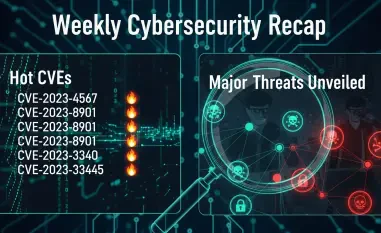Imagine a leading automotive giant, renowned for luxury and innovation, suddenly brought to a standstill by an invisible enemy. Jaguar Land Rover (JLR), a titan in the industry, faces just such a crisis with claims of a cyber-attack by a hacker syndicate linked to the notorious Scattered Spider group, sending shockwaves through corporate circles. This incident, emerging as a stark reminder of digital vulnerabilities, has sparked widespread concern. This roundup gathers insights, opinions, and strategic tips from various cybersecurity perspectives to dissect the alleged breach, its implications, and the evolving landscape of cyber threats. The purpose is to provide a comprehensive view of how such attacks challenge major corporations and what can be done to fortify defenses against them.
Unraveling the Cyber-Attack on Jaguar Land Rover
Scope and Impact of the Disruption
The alleged cyber-attack on JLR, reported since early September, has led to significant operational halts, particularly at the Halewood plant in the UK. Production and sales activities were suspended, with employees instructed to stay home as systems were shut down to contain potential damage. This drastic measure underscores the immediate and tangible impact of cyber intrusions on real-world operations, affecting not just revenue but also workforce stability.
Differing views exist on the severity of the breach. Some industry observers argue that the operational shutdown reflects a deep penetration of JLR’s systems, potentially compromising sensitive data. Others caution that without confirmed evidence of data theft or ransomware deployment, the full scope remains speculative. This uncertainty highlights the challenge of assessing damage in the early stages of such incidents.
A broader perspective suggests that this event is a microcosm of the vulnerabilities plaguing critical industries. Automotive giants, often reliant on interconnected digital systems for manufacturing and supply chains, are prime targets for cybercriminals. The consensus leans toward recognizing this as a wake-up call for enhanced preparedness across sectors.
Claims and Credibility of Scattered Spider’s Involvement
The hacker group, identifying as tied to Scattered Spider, has claimed responsibility, sharing unverified screenshots on platforms like Telegram to support their assertions of network access. Cybersecurity professionals hold mixed opinions on the credibility of these claims. Some suggest that the public display of alleged evidence might be a tactic to amplify reputational harm rather than proof of an actual breach.
In contrast, another viewpoint emphasizes the audacity of such groups, noting their history of engaging with media to maximize attention. This behavior, seen in prior incidents involving other major corporations, points to a deliberate strategy of combining financial extortion with public humiliation. The debate continues on whether the primary motive is monetary gain or broader disruption.
A third angle warns against overreacting to unverified claims, as fabricated evidence could be a ploy for publicity. This perspective urges companies and the public to await official confirmation before drawing conclusions. The varied opinions reflect the complexity of navigating truth in the digital battlefield where perception often weighs as heavily as reality.
Emerging Trends in Hacker Tactics and Collaborations
Bold Strategies and Publicity Maneuvers
Scattered Spider and similar groups are known for their brazen tactics, often seeking media attention to magnify the impact of their attacks. Industry insights reveal a split in interpretation: some see this as a sign of confidence in evading detection, making their actions a bold insult to targeted entities. This approach heightens the dual threat of financial loss and brand damage.
Another opinion focuses on the psychological warfare aspect, suggesting that publicizing breaches through social platforms is designed to pressure companies into compliance or payment. This tactic shifts the battlefield from purely technical to reputational, where the court of public opinion can be as damaging as any ransom demand.
A contrasting take argues that such publicity stunts might backfire, drawing law enforcement scrutiny and accelerating countermeasures. This view posits that while attention-seeking behavior may initially succeed, it could ultimately expose vulnerabilities in the hackers’ own operations. These diverse thoughts illustrate the multifaceted nature of modern cybercrime strategies.
Synergy Among Hacking Collectives
The collaboration between groups like Scattered Spider, ShinyHunters, and Lapsus$ has raised alarms across the cybersecurity community. Many experts point out that these English-speaking collectives pool skills in social engineering and voice phishing to execute sophisticated attacks, enhancing their effectiveness. This synergy mirrors the structure of legitimate businesses, making their operations alarmingly efficient.
A different perspective highlights the specific techniques, such as gaining high-value credentials through deception, as evidence of their growing capabilities. Examples of past breaches affecting major tech and retail firms demonstrate how shared resources amplify their threat level. This view stresses the need for industries to adapt to a more organized adversary.
Yet another opinion cautions against viewing these groups as invincible, suggesting that their collaborations might introduce internal conflicts or operational weaknesses. This angle advocates for exploiting potential fractures within these alliances through targeted intelligence efforts. The range of insights underscores the urgency of evolving defensive tactics to match these networked threats.
The Role of Youth in Cybercrime
An intriguing aspect of these hacking groups is their often youthful demographic, with members sometimes as young as teenagers. Many in the field express concern over the accessibility of hacking tools and the allure of cybercrime drawing younger generations into illicit activities. This trend poses unique challenges for both law enforcement and preventive education.
A contrasting viewpoint examines the societal factors, such as the glamorization of hacking in media, that may contribute to this phenomenon. This perspective calls for addressing root causes through mentorship and alternative skill-building programs to redirect youthful energy toward positive outlets.
Another angle focuses on the legal ramifications, noting that recent convictions and arrests of young hackers signal a crackdown, yet question whether punitive measures alone can deter involvement. This opinion advocates for a balanced approach combining enforcement with proactive intervention. These varied takes reveal the complexity of tackling juvenile participation in cybercrime.
Strategic Defenses and Industry Recommendations
Bolstering Cybersecurity Frameworks
In response to incidents like the one affecting JLR, cybersecurity professionals universally stress the importance of robust defenses against social engineering tactics. A common recommendation is to enhance employee training programs to recognize and resist phishing attempts, which remain a primary entry point for attackers.
Another widely shared tip is the adoption of real-time threat detection systems to identify and mitigate breaches before they escalate. This proactive stance is seen as critical in an era where attacks can halt operations within hours, as evidenced by the JLR case. Investment in such technologies is often cited as a non-negotiable priority.
A further suggestion emphasizes fostering a culture of digital vigilance within organizations. Encouraging staff at all levels to report suspicious activities without fear of reprimand can create an additional layer of defense. These collective insights point to a multifaceted approach as essential for safeguarding against evolving threats.
Collaborative Efforts and Future Preparedness
Many voices in the industry advocate for greater collaboration between corporations and cybersecurity experts to share intelligence on emerging threats. This cooperative model is viewed as a way to stay ahead of hacker innovations, particularly as groups form alliances to pool their destructive capabilities.
A differing opinion highlights the role of government and regulatory bodies in setting stricter cybersecurity standards. Proponents of this view argue that mandatory frameworks could force companies to prioritize defenses, leveling the playing field against well-organized cybercriminals.
Additionally, there’s a call for cross-industry learning, where sectors beyond automotive, such as finance and retail, exchange best practices to build resilience. This broader perspective sees the JLR incident as a catalyst for uniting diverse fields against a common enemy. The range of strategies reflects a shared urgency to adapt to an increasingly collaborative hacker era.
Reflecting on the Cyber Threat Landscape
Looking back on the discussions surrounding the alleged cyber-attack on Jaguar Land Rover, the incident served as a critical lens through which the cybersecurity community examined the audacity of groups like Scattered Spider and their collaborative networks. The varied opinions and strategic tips gathered from multiple perspectives painted a picture of both alarm and opportunity, revealing the depth of the challenge while offering concrete paths forward. For organizations aiming to protect themselves, the next steps involved investing in advanced threat detection, prioritizing employee awareness, and seeking partnerships with industry experts to share vital intelligence. Beyond immediate defenses, there was a clear push to address societal factors, like youth involvement in cybercrime, through education and intervention programs. As the digital landscape continues to evolve, staying proactive with innovative solutions and cross-sector collaboration remained the most promising way to mitigate risks and prevent the next major breach from catching industries off guard.













